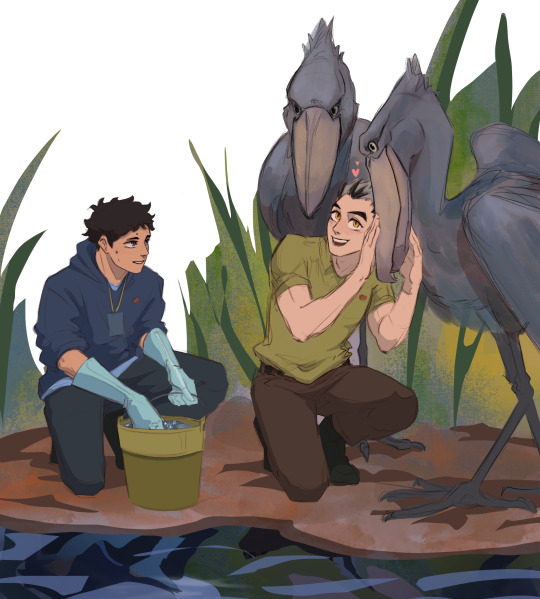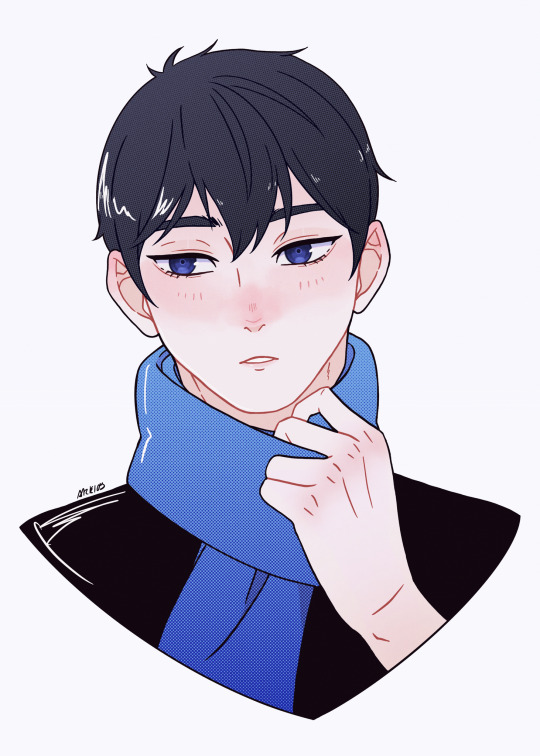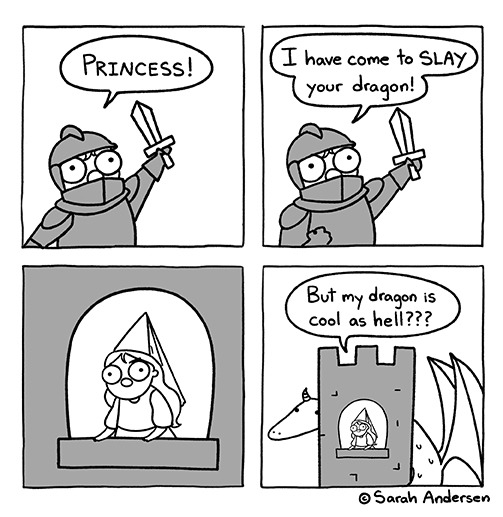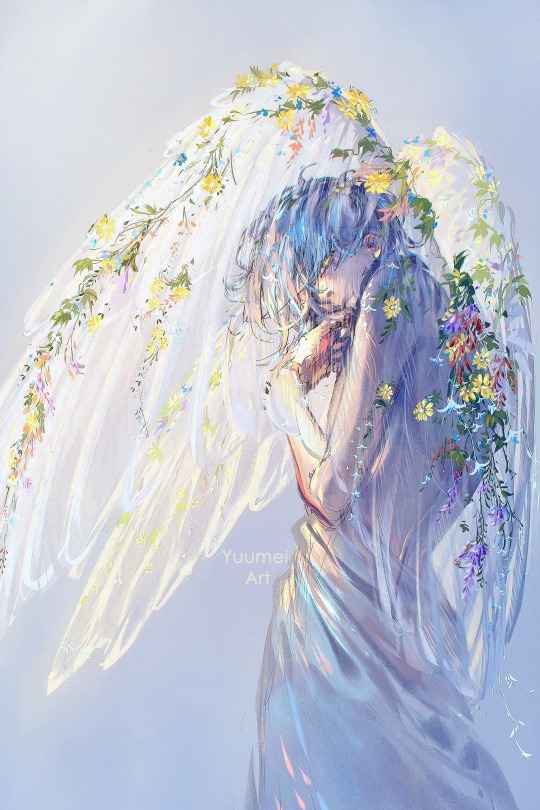Text




Vet / Zoo Keeper AU 🦉Support me on PATREON 🐯
4K notes
·
View notes
Text
the kaijo vs touou game is just so emotional to me. what do you mean we know each other better than anyone else. what do you mean i want to win but i don’t want to watch you lose. what do you mean you are the reason i’m here i’ve always been chasing chasing chasing you. what do you mean in order to grow i have to let go of you. what do you mean i’ll stop following you. what do you mean i'm learning what it means to be apart of a team. what do you mean i'll let go of a part of me (you are a part of me) if it's what i have to do for the team that i believe in, the team that believes in me. what do you mean i broke myself for this win and i still lost. what do you mean i lost but for once i am not alone. what do you mean i can’t comfort you; there are no words i could say. what do you mean i can’t shake this soft spot for you. “i know you better than anyone else” and “didn’t you think it could work the other way around?” and “what i need to do for them and what i need to do now.”
277 notes
·
View notes
Text
Kise and Aomine are THAT famous power couple and everyone adore them because Daiki publicly refers to him as “Sunshine” or “Baby” and Ryouta tags himself as “Aominecchi’s boyfriend/husband” in all his tweets and Instagram posts.
25 notes
·
View notes
Text
Writing Foundations: Creating Paragraphs
You can have the best story in the world, but if it’s all in one chunk on the page, you may struggle to find people willing to read it. To break it up, you need to know where and when to create new paragraphs.
Every new paragraph starts with an indent. So, to create a new paragraph, hit the enter key, and then the tab key, which is typically on the left side of the Q and either says TAB or looks like two stacked arrows pointing in separate directions.
So when do you start a new paragraph?
1. Anytime a new character speaks
The most obvious place to break up your paragraph is when a new character is speaking. Take this example.
“Hi John,” said Mary as she walked into the room. John was reading a book, and tucked a bookmark between the pages as she sat next to him. “how was work?” “It was good,” she replied, “but my boss really didn’t like the draft I sent her.” “That’s too bad, I thought it was some of your better work.”
Vs.
“Hi John,” said Mary as she walked into the room. John was reading a book, and tucked a bookmark between the pages as she sat next to him.
“How was work?” He asked.
“It was good,” she replied, “but my boss really didn’t like the draft I sent her.”
“That’s too bad, I thought it was some of your better work.”
See the difference? So you make a new line whenever a new character is speaking. In the case of Mary speaking twice, “It was good…” “but my boss…” we keep that in the same paragraph. Whereas when John speaks after Mary, it becomes its own paragraph.
The only time you may split the same character speaking is if they have a large chunk of dialogue. In that case, you can split their dialogue according to the next rule.
2. Any new idea
This isn’t necessarily a hard rule like the last one is. We have a lot of room to make interesting creative decisions when breaking up description or action. For the most part, though, you’ll want to break up your paragraph whenever there’s a new thought or idea. So:
A thin plastic film coated the room, making the furniture gleam in the sunlight streaming through the windows. On her right sat a couch upholstered in ivy coloured fabric, untouched by time.
Anna swept her fingers through her hair, chewing on her lip. She watched Rick out of the corner of her eye, “What are you thinking?”
The detective’s expression was completely neutral, though he clutched his pen tightly in one fist. In his other hand was a notebook, three questions written across it in blocky text,
1. Why are all the clocks stopped at 5:32?
2. Where’s the murder weapon?
3. Why did my wife leave me?
“Same as the others,” he said, tapping his pen against the last question, “the plastic wrap killer.”
So in this example we go from describing the room, to describing an action Anna is doing, to describing the detective, and then his notes. These are all separate ideas, so we can split them into their own paragraphs.
As well, as long as it’s about the same character or within the same ‘idea’, description can be paired with dialogue. You can see Anna’s dialogue comes after the description of her. You can totally do this, or you can split it into its own paragraph if you’d like. It looks natural where it is because Anna is the subject of the paragraph, and she’s also the one speaking.
In the case of the detective speaking, his action comes between dialogue. Also allowed, since the detective is the subject of that paragraph.
3. Any new location or skip in time
Similar to the last, if the scene starts outside, when they move inside it’s a new paragraph. If they go into a new room, get into a car, etc. Any time they change location, it starts a new paragraph. Same for a skip in time. If you need to go from day to night, new paragraph.
Kayde looked anxiously up at the looming oak doors. The windows were dark, layered in years of dust and grime. It’s now or never, they thought.
They pushed through the doors and into the foyer.
Kayde seemed to wait there for hours, and by the time someone came to greet them, it was already dark outside.
4. For style/effect
This is one of my favourite parts of writing. Once you nail when you should be splitting your paragraphs, you can start to play with splitting them for effect. I do this quite a lot. Take this example:
She fixed an ugly stare at herself in the mirror, long locks of brown hair hanging in front of her eyes. A pair of sharp scissors gleamed at the edge of the glass, pinched between her fingers. Dania raised the scissors to her hair.
Snip.
A lock fell towards the sink, the edges rough and imperfect.
Snip.
Another.
She chopped and hacked away at her hair until it was clumped in an unsightly pile over the drain of the sink, her head round and covered in patches where she didn’t quite get close enough to her skin.
She was finally free.
While the cutting of her hair could be in the same paragraph, it gives it more drama and effect when it’s split. Any time a character is going through something shocking or emotional, maybe try playing around with the paragraph to see if you can add some additional drama to it.
Paragraphs can be as long or short as you’d like them to be, as long as you have intention behind it!
556 notes
·
View notes
Text
reblog if you are ASEXUAL, support ASEXUAL PEOPLE, or SECRETLY A DRAGON IN HUMAN FORM
138K notes
·
View notes
Text
When Your Antagonist Isn't a Person
Last time I talked about how to character create an antagonist (check it out here if you missed it!) but what happens when your antagonist isn’t a person?
Antagonists don’t necessarily have to be another character (or even one singular character). Rather, an antagonist is anything that raises the stakes and creates conflict for your protagonist. You will likely find this antagonist in your worldbuilding.
1. What your world may say about your antagonist
In a survival story, your protagonist will likely be out in the wilderness alone—thus, their antagonist may be creatures, starvation, dehydration, exposure (freezing, sunburn). Or something like a giant storm, or other natural phenomenon/disaster.
In an urban setting, the antagonist may be the ‘system’ itself; politics, institutions, a way they’ve been disadvantaged or otherwise put down by their world. (Often these systems can be represented by a person, if you so choose).
And a futuristic world opens up to technology being an antagonist; things aren’t working as they’re meant to, AI has gone wrong, or it’s gone too right—the technology is taking away from what the protagonist wants.
2. Goals and Motivations
Your non-human antagonist may not have goals or motivations, or very basic ones. Does a nasty storm exist to destroy humans? Probably not, it just is as it is. A creature’s goal may be to eat, it’s motivation being that it’s hungry.
However, a system or institution may have deeper goals/motivations. For example, Amazon is a company built to make Jeff Bezos money. Your institution may have a goal it presents to the public, and a true goal (usually monetary, but could also be religiously or politically motivated).
3. Additional sources of conflict
Sometimes non-human antagonists need some extra support to make your character’s life suck. A dangerous storm brewing in the distance is great, but you may also need some additional sources of conflict to keep your character moving until it reaches them.
If your character is taking down Amazon, they may be targeted by police, or drones with guns, or people who live off an Amazon salary, or require the convenience of it.
Often stories without one human antagonist tend to have multiple little antagonists. Survival stories are great for the amount of different conflicts you can throw at a character. You may even introduce small conflicts between other characters, even if those characters aren’t fully antagonists.
Next time I’ll talk about character vs. self, what do you do when your antagonist is also your protagonist?
705 notes
·
View notes
Text

December 🫐❄️
244 notes
·
View notes
Text
“If you are hoping to find your self-worth and fulfillment in other peoples’ opinion of your writing, you will never find it.”
— Anne Lamott
337 notes
·
View notes
Text
benefits of being a dragon
being a dragon
being a dragon
being a dragon
being a dragon
being a dragon
being a dragon
23K notes
·
View notes
Text
my dream as a fanfic writer is to write a story which people want to talk to me about and send asks about afterwards and discuss things the characters did and the symbolism and meanings behind certain lines and I'll be all "hehe thanks" but irl I'll be in literal tears because I wrote something that means something to someone
41K notes
·
View notes
Text
“One of the most solid pieces of writing advice I know is in fact intended for dancers – you can find it in the choreographer Martha Graham’s biography. But it relaxes me in front of my laptop the same way I imagine it might induce a young dancer to breathe deeply and wiggle their fingers and toes. Graham writes: ‘There is a vitality, a life force, an energy, a quickening that is translated through you into action, and because there is only one of you in all of time, this expression is unique. And if you block it, it will never exist through any other medium and it will be lost. The world will not have it. It is not your business to determine how good it is nor how valuable nor how it compares with other expressions. It is your business to keep it yours clearly and directly, to keep the channel open.’”
— Zadie Smith (via campaignagainstcliche)
25K notes
·
View notes
Text
I turn 30 next month so here’s what I learned in my 20s:
—don’t work for startups, they’re always one ‘innovative idea’ away adding ‘sell your kidneys on the black market’ to your job description.
—keeping a collection of basic OTC medicine on you will save your life one day. I recommend Advil, Imodium, and TUMS.
—those little single-use glasses cleaning wipes are 1000% worth the money
—overly self-depreciating jokes just make people uncomfortable, wean yourself off of them
—you can buy dehydrated mini marshmallows in bulk online and they’re a godsend for hot cocoa
—people don’t care if you have fidget toys on your desk they just want to play with them
—try to go to bed BEFORE the existential ennui kicks in
184K notes
·
View notes
Text

been in my knb era again so i’ll be doodling them a lot more !!
148 notes
·
View notes
Note
Apparently I’ve just only been exposed to extremely biased sources on the situation. I was under the impression that Anish kapoor bought vanta black and made it so he was the only artist who could use it commercially
I figured as much. And it’s really not your fault, that’s what everybody thinks, because that is very specifically the narrative that Stewart simple propagated to the media, which worked because it launched his career. We all hate the idea of an elitist asshole gatekeeping something, especially in the name of art. But as I’m about to explain, nothing is further from the truth than that narrative.
So in order for me to explain this to people who’ve only ever heard the Stewart simple version of the story. I need to reset the narrative around Vantablack so let’s discuss the following framework.:
What Vantablack is: Vantablack is a substance made out of carbon nano tubes, originally grown in a lab and functions as the darkest synthetic material on earth. Under a microscope Vanta black looks more like shards of glass, sticking out as tubes. The original version of Vanta Black was so difficult to work with that there was no possible way it could be used outside of its original intent.
What Vantablack is not: a pigment. A paint. Vantablack is not something that you were supposed to use to paint with.
Who creates and distributes Vantablack: an engineering company named Surrey NanoSystems.
Who does not do those things: an art house. A distribution company. Any kind of company that creates and distributes pigments on a massive, artistic scale.
Who was Vantablack made for: Vanta Black was made by aerospace engineers for aerospace engineers, looking for something to coat the insides of massive NASA telescopes.
Who it was not made for: artists.
———————————-——————————————
Hopefully already just by understanding what Vantablack is, what it was made for, and who it’s made by you and other people are beginning to see what the problem is with Stuart simples narrative around Vanta black. 
But you may be wondering if Vanta black is a highly toxic unstable substance made out of carbon nano tubes by aerospace engineers for aerospace engineers, working in space, then how did we get here? well, Vanta, black 2.0, if you will was created in such a way that it could be sprayed onto substances in a certain way meaning that theoretically it could be used artistically. Surround nanosystems held an exhibition where they displayed Vanta black and when artist saw this, they were inundated with calls from artist, wanting to use it in their work. But as we’ve already established surrey nanosystems is not a distribution company. They’re an engineering company. And they made the decision that they could only work with one artist, because they simply did not have the physical ability to produce Vantablack at a scale that allowed them to work with more than one person. (To this day, vanta Black has to be distributed by a specialized robotic arm that creates it in painfully small amounts in an enclosed box that can then be given to someone in a lab. )
Enter Anish Kapoor: Anish Kapoor, at this time was already a world, renowned artist, and the creator of many public facing pieces, such as cloud gate, a.k.a. the Chicago Bean. His entire life‘s work was dedicated to how light is refracted and interplays with the void, making him not only the perfect person to be chosen because of prestige but also because his life‘s work spoke to the engineers who created Vanta black.
Now this should’ve been seen as an incredible accomplishment and honor for this Indian artist to be chosen as the soul licensor of Vantablack as this company was only able to choose one person and people were really excited about this for him and that’s where the story ends, right? Right? Right? 
Enter Stuart Semple: Stuart simple was a 25-year-old man in the UK living with his mother when she came into his room and told him about Vantablack. As an artist himself, Stewart simple wanted to try Vanta Black, and was told by the company that he could not. It was then that he discovered the only person on earth licensed to use Vantablack was Anish Kapoor. Please keep in mind that Vantablack is not a paint, and it is so difficult to work with that Anish Kapoor has only ever produced one singular piece of art with Vantablack. So like a child who has just been told by their mom that they can’t use something, Stewart simple decided to throw a hissy fit. He created a pink pigment that he conditionally said everyone could use except Anish Kapoor and then launch this pigment with the hashtag #ShareTheBlack. 
This caught the attention of the news media, and when asked about this situation, that was previously relatively unheard of, Stuart simple, went onto describe Anish Kapoor as this tyrannical elitist who “banned“ the use of Vantablack to keep other artists from using it. But hopefully you can already see how that is Literally not true. Anish Kapoor does not make Vanta black. Anish Kapoor cannot sell Vanta black. Anish Kapoor cannot give you permission to use Vanta black. And Vanta black is not even a paint. 
But the narrative of some elitist asshole gatekeeping, a color, versus some poor, struggling artist, was so catching that tens of thousands of people on the Internet flooded Anish Kapoor‘s social media, pages to talk shit about him and to this day when Anish Kapoor is brought up, it’s always “fuck Anish Kapoor“ meanwhile Stuart has launched an entire very lucrative career around slandering and smearing Anish Kapoor when Anish Kapoor literally never did anything but be qualified enough to be the one person chosen by a company that is literally only able to work with one person at a time. 
The fact remains Stewart simple, very intentionally allows this narrative to continue because it makes him money. He has made a ton of money off of slandering Anish Kapoor as if Anish Kapoor is the reason he can’t use Vanta black when the reason he can’t use Vanta black is because no one can use Vanta black, and the only person who might be able to use it is Anish Kapoor and that is not Anish Kapoor‘s fault. 
It is not lost on me that there are racial connotations to the story as well. There are actual companies and artists in the world who have trademarks around certain colors that they do not allow other people to use in public showcases. But we really as a community allowed this white man to smear and slander an Indian artist, based entirely off of misinformation, and to this day people jump on the Internet, saying fuck Anish Kapoor because of it. Now, Anish Kapoor is not some struggling person. He is probably a multibajillionaire And doesn’t necessarily need our sympathy. But I think the story of Vantablack is a really good case study of how misinformation spreads, and how people never bother to question the framework of a story. 
22K notes
·
View notes


